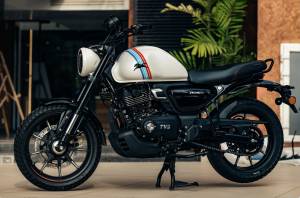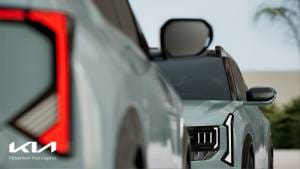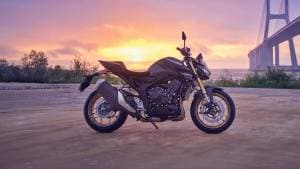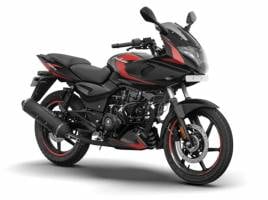2013 Honda Amaze i-DTEC in India road test
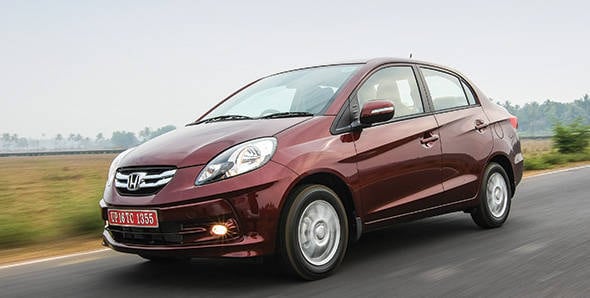
It has come in late but as they say some things are better late than never. In this case, the sigh of relief will be heard from Honda as well as the thousands of consumers who have been waiting forever for Honda to introduce a diesel engine in the Indian market. The car carrying this diesel engine is the new Amaze, Honda's first entry-level mid-size car for India. It's all the more promising that, for a country obsessed with diesel, Honda has developed a car that is targeted at the masses. But does it promise to be the best in class? We drove the pre-production Amaze in Japan last year and were impressed. A few rough edges existed but they have been filed off before the car made its way to India. This time, we sampled all the variants of the production car right here in India. So has Honda gone for the kill? Will the Amaze be as path breaking as every other car Honda has introduced in India to date?
Design and Styling
The Amaze is based on the Brio, the hatchback that has off late given Honda much needed success in the mass market. To start off with a mid-size car based on the compact Brio may sound weird. But let's not forget that segment leader Maruti Suzuki also travelled down this same road and the Dzire today enjoys enormous success.
However, unlike the Dzire, one look at the Amaze will leave you satisfied with the overall design which is much more fluent. The face is the same as the hatchback except for a few changes like the new twin-slate chrome grille and a body coloured bumper. This makes the car look mature and upmarket compared to the Brio. Move to the side and it's entirely different, all the similarities end once you look past the wheel. It's an all new sub-four metre sedan and hence, gets a slightly stubby boot that gels well with the rest of the car and is also quite pleasing to the eye.
The wheelbase is 60mm more than the Brio (unlike the Dzire that doesn't get an increase in wheelbase from the Swift). This liberates a lot of extra rear passenger room (more on it later) and also results in a longer rear door and taller roofline. The 14-inch alloy wheels are standard in the top variants but are smaller than competition and could have been larger. The petrol and diesel models get differently designed 10-spoke wheels, with the latter getting a slightly wider rim.
The sharp shoulder line is similar to the Brio and it runs all the way from the front bumper to the rear door. To add more definition, another crease runs from the rear door handle to the tail lamp which gives a sense of bulk and solidity to the rear. Talking about the tail lamp, the designers have given the same arrow shot design treatment like in the Honda City. Viewed from the rear, the wraparound angular unit looks very similar to current Honda models and gives the car a family look. A thick chrome strip runs across the boot to give it a premium air and the bumper is very City like with many lines running around but has been kept flat to keep the car under four metres. However the bumper is smart, well integrated and adds to the overall character of the car.
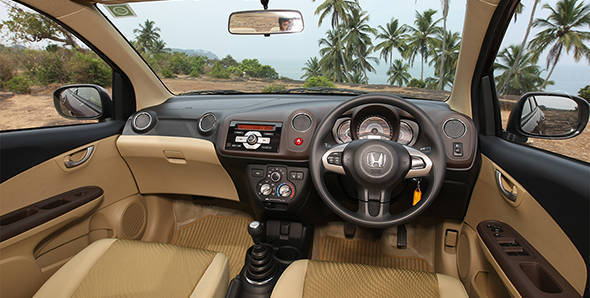
Step inside and one is greeted by the same Brio dashboard. The black/beige theme with dark brown inserts hasn't changed. It's a unique and smart colour combination (except for the dark brown surround that is out of place) but we expected to see a more upmarket finish or texture given that a sedan in India is perceived as more valuable than a hatchback. The overall fit and finish is good except for the glove compartment lid which in our test car did not fit in snugly.
There is generous space up front and the single-piece front seats offers good support and are comfortable. There is good headroom up front (upto 1000mm) while the driver's seat offers height adjustment as well. However, move to the back and it turns into an even more spacious cabin. Honda definitely is one of the best when it comes to space management and it's no different in the Amaze. The car puts Honda's 'man maximum machine minimum' concept to good use. This approach has let engineers maximise the space available for passengers and minimised the space required for mechanical components such as a smaller engine bay. The increase in wheelbase and clever designing has resulted in a maximum rear knee room of 930mm (70mm more than the Dzire) making it as roomy as the larger Honda City. The floorboard is almost flat and there is enough space for the middle passenger, though they will be slightly cramped for room. Rear passengers will also be able to comfortably slide their feet under the front seats while the seat back angle is relaxed with good support making this easily the most comfortable sedan in its segment. The centre armrest comes equipped with two cup holders. In total, the car offers five cup holders and four bottle holders that are placed in the door pockets.
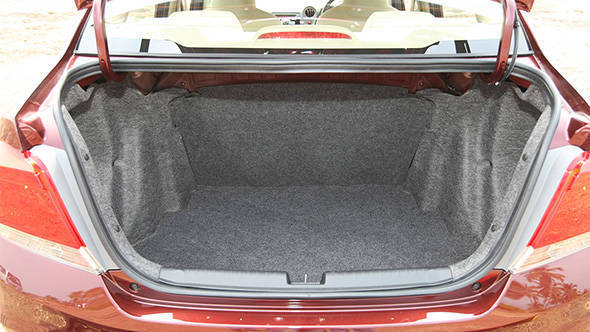
The almost horizontal roofline has resulted in impressive headroom for the rear passengers. With space on par with a full size C-segment car, one would expect boot space to take a hit since the car is just 3990mm long. The Dzire, for example, offers 315 litres of boot space, just 111 more than the Swift. This is not the case with the Amaze, the car offers a total of 400 litres (225 litres more than the Brio!) despite offering much more knee room than the Dzire while being shorter in length. As Honda calls it, the Amaze is certainly a micro limousine.
Engine and Transmission
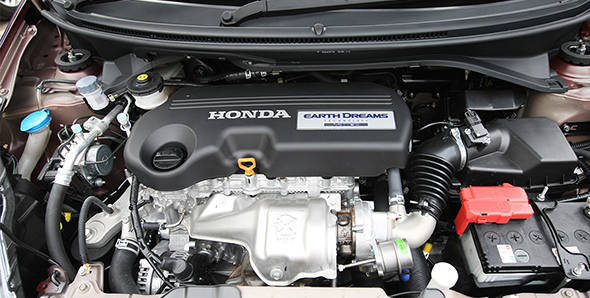
Honda is known for making quality petrol engines for years now. From fuel efficient compact engines to high revving Formula 1 units, and even jets, they've made it all. That doesn't mean they've never made a diesel. In 2002, Honda introduced a 2.2 litre diesel engine in the Accord and set a very high standard. They then updated it as emission norms got tighter and used it in many more models. The engine even went on to win many international awards. But then the norms only get stricter and the need for a new diesel motor with focus on both power and efficiency came up, especially in Europe, and Asian markets like India. This meant that engineers developed an engine from scratch using Honda's next generation 'Earth Dreams Technology'.
Honda's next generation technology focuses on both driving performance and fuel efficiency. An all-aluminum 1.6 litre was developed which Honda claims is the world's lightest diesel engine. This engine is now used in Europe making its debut in the 2013 Honda Civic and more recently in the CR-V. For India however, a 1.6 litre diesel could not avail of the excise duty benefits so the engine had to be downsized. Among several other changes, the capacity is reduced to 1498cc.
The i-DTEC engine produces a class-leading max power of 100PS at 3600rpm and 200Nm of torque produced at 1750rpm. The engine is refined and quite silent at idle, however, as revs increase there is some amount of engine noise that seeps into the cabin but over short distances and low revs, it is not an issue. Honda engineers have added more sound deadening materials as compared to the petrol variant to keep NVH levels in check but could have done better.
The five-speed transmission is similar to the petrol but gets reworked ratios and a different clutch to handle the extra load. The gear shifts are seamless and the throws are short, surely making it one of the best transmissions in its class. Incidentally, the Amaze diesel only gets the five-speed manual transmission while the petrol is offered in both manual and auto boxes. Out on the road, the engine displays very little turbo lag and the power delivery is linear. At low speeds, the engine doesn't knock despite being in a higher gear and even pulls well from low revs, making it perfect in town and on highways. Pass 3000rpm and the engine quickly revs to 4100rpm before shifting to the next gear.
The petrol variant shares its engine with the Brio where the 1.2 litre i-VTEC unit produces a similar 88PS at 6000rpm and 109Nm torque at 4500rpm. The engine is rev happy and peppy. Since the Amaze has gone up in weight by just 20 kilos, performance is very similar to the hatchback which itself is a good performer in the hatchback segment. The engine is mated to a five-speed manual transmission or a five-speed torque convertor depending on the model. The manual box offers precise shifts and is a joy to use. The automatic unit offers quick shifts but just like the Brio, it takes some time to get the engine to spin after stepping down gears.
Performance and Efficiency
The Amaze diesel excels in both performance and efficiency. The dash to 100kmph is completed in just 13.3 seconds making it the quickest car in its class. The car cruises comfortably at speeds upto 130kmph but just like in the Brio, the top speed seems to be limited. The car, however, doesn't cross 140kmph. This is disappointing considering most of the competition max out at higher speeds. The car also sets a new benchmark in fuel efficiency, the ARAI claimed figure is a shocking 25.8kmpl (0.36kmpl more than the small 1.0 litre three-cylinder Beat diesel) making Amaze the most fuel efficient car in the country. To aid in better fuel efficiency, a special ultra low viscosity (0W20 grade) semi-synthetic diesel engine oil is used. Honda co-developed this oil with Idemitsu and JX Oil. We tested the Amaze in the city and on the highway and the car returned an impressive 15.86kmpl and 23.98kmpl respectively. This translates to an overall figure of 17.89kmpl. The ARAI claimed figure for the manual and automatic petrol models is 18kmpl and 15.5kmpl respectively (down by 0.4kmpl and 1.0kmpl to the Brio).
Ride and Handling
As mentioned earlier, the wheelbase has increased over the Brio by 60mm to 2405mm. The Brio is a good handler and its flickablilty remains one of its impressive traits. The Amaze doesn't lose out on this nimble character, it features a similar MacPherson suspension up front and a H-type torsion beam at the rear. The car feels very similar to the Brio and is easy to drive in town where it feels smaller than the competition. The steering is quick and sharp and is a boon, especially in dense traffic. Interestingly the turning radius is more than it's in the petrol variant (4.7m and 4.5m respectively). This is because the track has been increased in the diesel and petrol auto models to accomodate the larger transmission. Around corners there is body roll but it's never a concern, despite running skinny 175-section tyres mounted on 14-inch wheels, the car holds its line quite well and there is enough feedback from the steering too. At 1060kg, the diesel Amaze is quite light but is still 110 kilos heavier than the petrol variant. This increase in weight is apparent, especially after driving the petrol car. The Amaze is slightly front heavy and shows earlier signs of understeer when pushed hard, this, despite utilising stiffer front springs compared to the petrol. However, the car still handles quite well. It isn't the best handler in the segment but feels rather neutral. Despite both models being light, high speed stability isn't a problem (we tested the diesel up to 140kmph and the car maintained a steady line). The electric steering weighs up quite well too. The car does decently well when it comes to soaking up potholes. It's not the best out there for sure, but still offers a supple ride. Also, at high speed, undulations can result in a slightly bumpy ride especially for the rear passengers.
Features
The Amaze is available in 10 variants. The basic E variant gets front and rear power windows and standard ABS (only diesel model), in addition the EX variant adds body coloured mirrors and door handles and a single DIN stereo. The S gets a double DIN stereo, keyless entry, driver seat adjust, power adjustable mirrors and a rear armrest to name a few while the top end VX variant also sports alloy wheels, fog lamps, indicator on mirrors, rear defogger and dual front airbags. The petrol model gets two additional variants along with the four variants like in the diesel. The features are similar as in the diesel but it is surprising that Honda, a manufacturer that focuses on safety, aren't offering standard ABS in the entry and mid-level petrol models when all diesel models get it as standard fitment. All top models also get unique features that are first in class like power folding mirrors and a special heat deflecting windshield.
Verdict
The Amaze is competitively priced on par with its rivals and is the most affordable Honda sedan one can buy today. The petrol Amaze ranges between Rs 5.35 lakh to Rs 8 lakh while the diesel variants are priced between Rs 6.49 lakh and Rs 8.01 lakh, all prices ex-Mumbai. Affordable pricing for a car that promises to be the new benchmark in its segment makes the Amaze Honda's new crown jewel. The lines outside Honda dealerships are only getting longer, though there is no need to carry your sleeping bag and snacks, production has already begun a month back and there should be enough of the Amaze to go around quickly.
Starts Rs 6.32 Lakhs
1498cc
Manual
90
200
21 Kmpl
Starts Rs 10.9 Lakhs
1497cc
Manual
100
145
17.8 Kmpl
Starts Rs 17.94 Lakhs
1597cc
Manual
120
300
26.8 Kmpl
